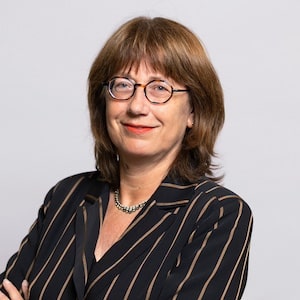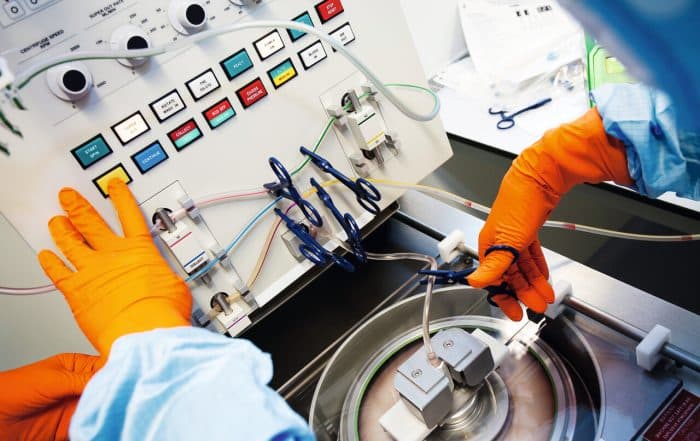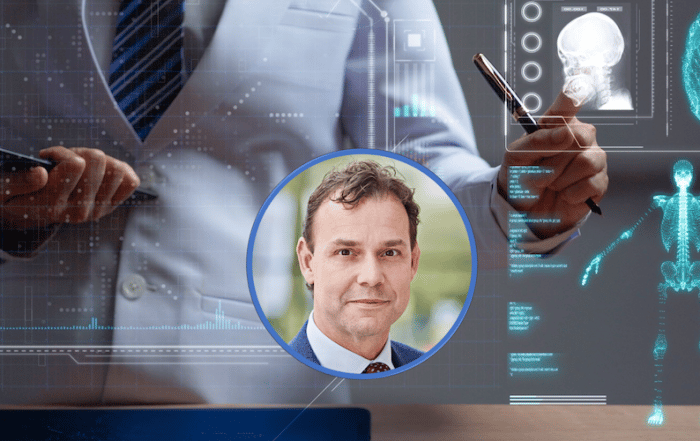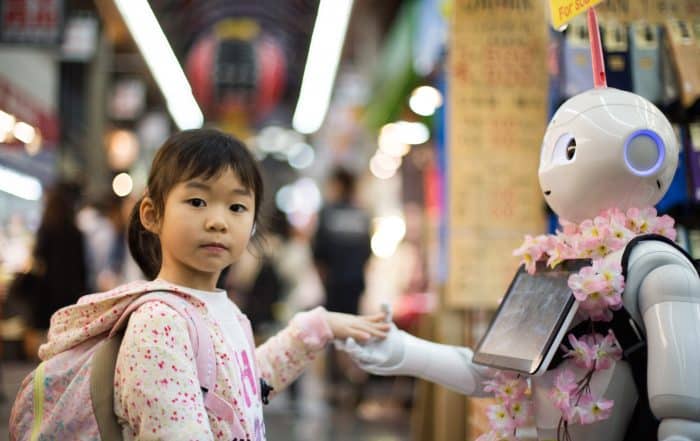Jesse Aarden: AI is a necessity for sustainable healthcare
“If you want to make connections in the field of technology and Artificial Intelligence and use each other's data, you have to work together,” says Jesse Aarden, initiator of the Smart Health and Vitality Lab at Amsterdam University of Applied Sciences. “This requires a good network, and that is what Smart Health Amsterdam offers.”
With more than 48,000 students spread over seven faculties, the Amsterdam University of Applied Sciences is an important part of the city, says Aarden. Despite this, he says, “we’ve been quite internal, focused on education. Over the past decade, we realized we needed to do more than that, that we needed to have a broader impact on the city of Amsterdam.” The AUAS partnership with our Smart Health Amsterdam initiative supports that determination to make a difference. Essential to the Lab’s work is the ability to connect and collaborate with others in the life sciences and health fields.
Application of AI solutions
The Smart Health and Vitality Lab is part of the AUAS Center of Expertise Applied AI, which is a leader in the development of AI applications. The Center of Expertise has been set up so that students can get started with what Aarden describes as the increasing role of AI. “Artificial intelligence is everywhere: Spotify and Netflix, the cameras on the street. We want to make our students aware of the importance of AI for their future profession. And that it is different in a financial profession than in healthcare.”
The Smart Health and Vitality Lab works together with students from the faculties of Health, Sports & Nutrition and Technology to develop data science applications for healthcare and wellbeing. An early example was the REACH+ project, which followed the rehabilitation at home of COVID-19 patients after intensive care. Activity, heart rate, oxygen and perceived fatigue were monitored daily in real time with sensors. The measured values were partly registered automatically via a connection to the patients’ smartphone and partly by entering data manually. The results were used to support patients and help caregivers deliver better care. The project was a learning opportunity for his research group, says Aarden. “Continuous monitoring of physical activity is relatively easy. But monitoring oxygen and heart rate was still quite a challenge at the time. We realized that if we want to do that, we need to organize things a little differently and work even more closely with data scientists.”
Optimal recovery
The lessons from REACH+ are incorporated in other projects such as OPRAH (Optimal Physical Recovery after Hospitalisation). This project assesses the effect of exercise and diet on oncology patients recovering at home after major surgery. Data collected through continuous monitoring is used to advise patients and caregivers about necessary changes to optimize recovery. The project is still at an early stage. The goal, Aarden said, is to build a database that supports clinical decision-making and identifies patients whose rehabilitation may be compromised by a combination of a lack of proper nutrition and insufficient physical activity.
Predictive AI Models
The next step for the Lab is to build predictive models with AI technology that will improve healthcare in the longer term, identify risks early and support preventive health interventions. Aarden is a specialist in elderly care and believes that AI can play a huge role in this area in promoting long-term health and vitality. “So many factors come into play, especially in the geriatric population, not just physical activity and diet.” For example, AI can detect an increased risk of falling. “We can see someone walking more slowly than in the past,” Aarden says, “and that’s a risk indicator for falling.” By using patient data to identify and classify risk levels and factors, AI can benefit patients and society as a whole. “This way we can take action before patients go to the GP and then to the hospital. Let’s see if we can prevent that.”
Theory and practice
The AUAS specializes in applied research. Aarden describes this as a theoretical approach, combined with concrete, innovative practical applications. “Many parties are interested in us, because we have many contacts in the field,” he explains. “We are close to the patients, the nurses and therapists. That has a direct impact on our research. We work with them, listen to them and adapt our research. We always keep in mind: what is the impact for that patient in that situation?”
Smart solutions are needed now
Aarden emphasizes the importance of his Lab’s focus on data and AI innovations that lighten the burden on healthcare providers. “You can’t solve every problem,” he says, “But if we want to deliver the same standard of healthcare, we have to come up with smart solutions. And we have to support the healthcare providers.”
Spending less time on administration – by automatically transferring information to electronic patient records using smartphones or tablets – is one way to do this, as is using sensors and wearables to monitor patients. Text mining and natural language processing can also be used to analyze electronic health records to detect functional levels. Such digital solutions are essential, given the staff shortages and the increasing demands placed on healthcare systems: “It saves time that you can spend with your patients. I am not saying that the workload will decrease, because there is always a lot of work , but at least we will still be able to provide healthcare to our population.”
Scale deployment
In addition to attention for innovation, Aarden believes there is also a need for better implementation of the technology that is already available and for better cooperation and coordination within healthcare. “You see there are all kinds of initiatives, and each healthcare provider has their own systems, but it’s not interconnected. We need to implement technology not just in a single practice, but in more practices. We have to work together.” He fears that not everyone in healthcare understands the importance of working together to come up with practical solutions in the short term. “We need our students and caregivers to be open to change,” he warns. “It’s not just about the system, it’s about how we can help our healthcare providers really use the system, trust it and bridge the gap in healthcare. The technology is here. Now it’s time to roll it out. ”
Network for change
Stimulating collaboration within the smart health ecosystem is an important step in achieving the goal of the municipality of Amsterdam: a healthier city. An initiative such as Smart Health Amsterdam is therefore very useful, says Aarden. “We’re dealing with a lot of complex issues,” he says, “and we need to work together to solve the problems. The Smart Health network is a good example of that.”
5 July 2022
Read more about
Contact us
Want to keep up to date?
Get the best regional news and events (in Dutch) via the Board Update newsletter
Share this news
Want to keep informed?
Follow us daily on LinkedIn and sign up for the Board Update newsletter.
Read more
- What is the Amsterdam Metropolitan Area’s position on critical raw materials? ...
- Preparations for the National Zorginnovatieprijs 2026 by Zorginnovatie.nl are underway, and registration ...




